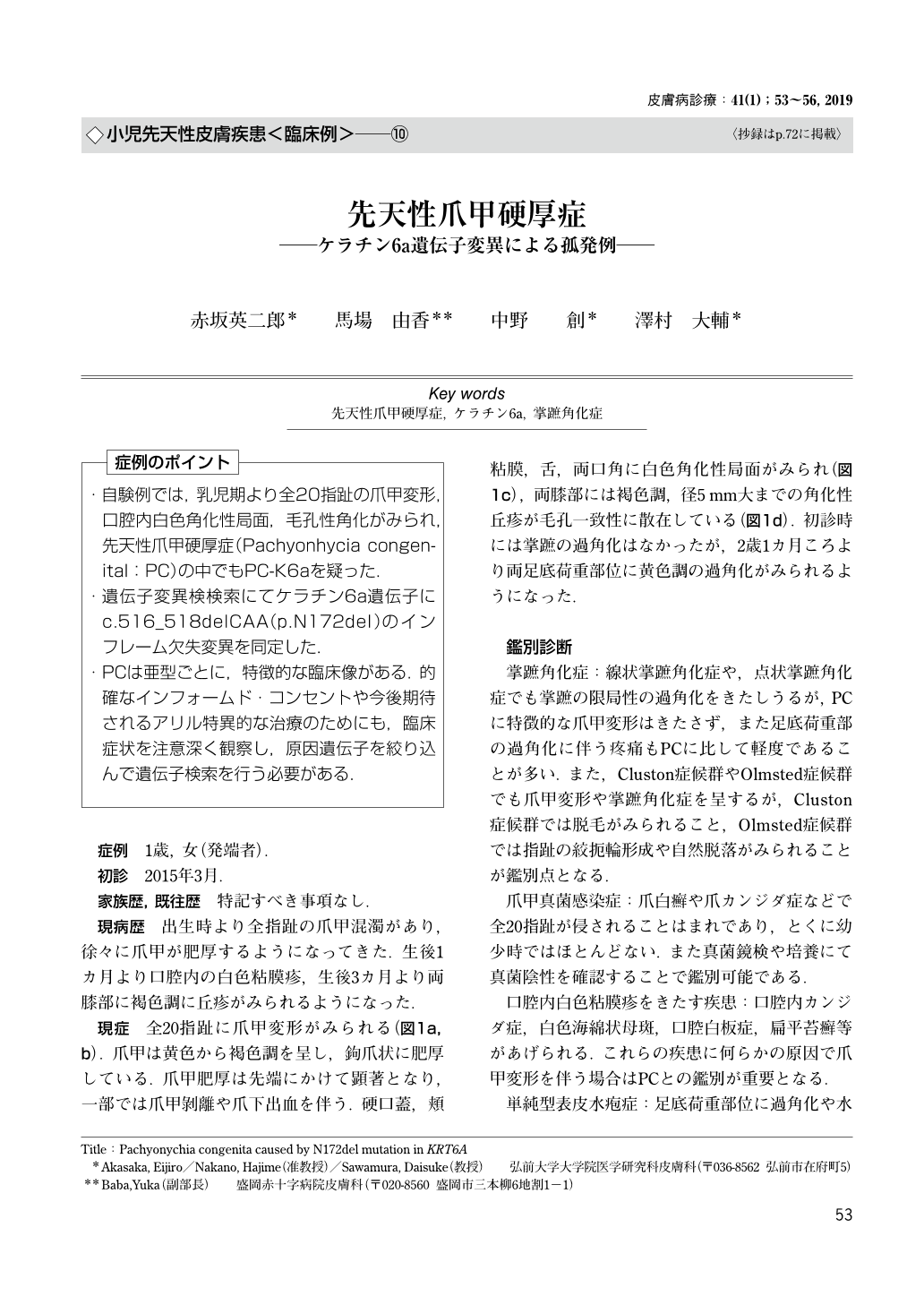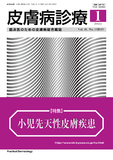- 有料閲覧
- 文献概要
- 1ページ目
- 参考文献
・自験例では,乳児期より全20指趾の爪甲変形,口腔内白色角化性局面,毛孔性角化がみられ,先天性爪甲硬厚症(Pachyonhycia congenital:PC)の中でもPC-K6aを疑った.・遺伝子変異検検索にてケラチン6a遺伝子にc.516_518delCAA(p.N172del)のインフレーム欠失変異を同定した.・PCは亜型ごとに,特徴的な臨床像がある.的確なインフォームド・コンセントや今後期待されるアリル特異的な治療のためにも,臨床症状を注意深く観察し,原因遺伝子を絞り込んで遺伝子検索を行う必要がある.(「症例のポイント」より)
Pachyonychia congenita caused by N172del mutation in KRT6A
Akasaka, Eijiro1)Baba, Yuka2)Nakano, Hajime1)Sawamura, Daisuke1) 1)Department of Dermatology, Hirosaki University Graduate School of Medicine 2)Division of Dermatology, Morioka Red Cross Hospital
Abstract A 1-year-old Japanese girl developed hypertrophic nail dystrophy and oral leukokeratosis shortly after birth. Then,hyperkeratotic follicular papules were also observed on her knee. The proband was born to the second child born tohealthy nonconsanguineous Japanese parents. A mutational analysis of KRT6A revealed heterozygous N172delmutation in the proband, but not in the parents. Pachyonychia congenita( PC) is a rare inherited keratinizing disordercharacterized by hypertrophic nail dystrophy, palmoplantar keratoderma, oral leukokeratosis, follicular keratoticpapules, cyst, and neonatal teeth. PC is divided into 5 subtypes according to the causative genes and each subtypehas characteristic clinical features. Among them, patients with PC-K6a, which is caused by mutation of KRT6A,show higher susceptibility of nail dystrophy in all 20 nails and oral leukokeratosis, earlier onset of nail dystrophy,and severer painful plantar keratoderma than those with other subtypes of PC. Well understanding of the clinicalfeatures of each PC subtype is essential for correct diagnosis and appropriate informed consent, and it will also beindispensable for allele specific novel therapies in the future.

Copyright © 2019, KYOWA KIKAKU Ltd. All rights reserved.


